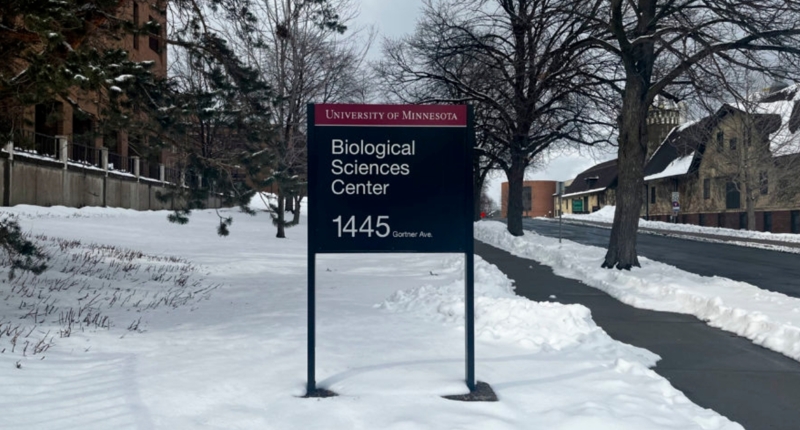Parts of the Biological Sciences Center building on the University of Minnesota St. Paul campus have been closed off due to initial concerns of asbestos and water damage caused by a pipe burst. The Hazardous Materials team tested the site and found “no elevated levels of airborne asbestos” in the Biological Sciences Center, but some areas remained closed until testing was complete. The University has decided to keep some areas of the building closed due to the water damage, but neither closure is related to asbestos. Asbestos exposure has been linked to various illnesses, including lung cancer and mesothelioma, and can be found in materials like building insulation and drywall. Despite the impact on classes, the University is prepared to analyze samples quickly and remove asbestos when necessary. Some students have expressed concern about a lack of communication regarding the asbestos testing in the building. More information on the Hazardous Materials Program and asbestos can be found on the University of Minnesota websites.
Parts of Biological Sciences Center Closed for Repairs and Asbestos Testing
Parts of the Biological Sciences Center building on the University of Minnesota St. Paul campus have been closed off to students and faculty due to initial concerns of asbestos and water damage caused by a pipe burst on the building’s fifth floor. The closures have been in effect throughout the spring semester.
Jake Ricker, director of public relations at the University, confirmed that a Hazardous Materials team tested the site to determine any possible asbestos exposure after the burst. Fortunately, the team found “no elevated levels of airborne asbestos” in the Biological Sciences Center. However, the areas they tested had to be closed off until the testing was complete.
Despite this, the university has decided to keep some areas of the building closed due to the water damage. As a result, one hallway in the basement and the third-floor lounge remain closed off, although Ricker clarified that neither closure is related to asbestos.
Asbestos is a naturally occurring mineral that has been used in building construction and can be found in materials like building insulation and drywall. The University’s Facilities Management website warns that asbestos exposure has been linked to various illnesses, including lung cancer and mesothelioma.
According to Ricker, thousands of products in the U.S. contain asbestos, including ceiling tiles, floor tiles, and piping insulation. However, the Hazardous Materials team at the University is prepared to analyze samples quickly and remove asbestos when necessary.
The closures have affected the ability for classes to meet in the building, with some students having to adjust to the closures. Despite the impact on classes, both Jordan Sivigny, a teaching assistant for a course taught in the building, Foundations of Biology for Biological Science Majors, and Makenna Tosi, a plant and microbial biology student at the University, stated that they did not receive any updates from the University regarding the asbestos testing in the building.
In conclusion, parts of the Biological Sciences Center building on the University of Minnesota St. Paul campus have been closed off due to a pipe burst that caused water damage and initial concerns of asbestos exposure. The University’s Hazardous Materials team tested the site and found no elevated levels of airborne asbestos. The University has decided to keep some areas of the building closed due to the water damage. While the closures have disrupted some classes, the University is prepared to analyze samples quickly and remove asbestos when necessary.
Lack of Communication Regarding Asbestos Testing
Despite the initial concerns of asbestos exposure, Makenna Tosi, a plant and microbial biology student at the University of Minnesota St. Paul campus, stated that she did not receive any updates from the University regarding the asbestos testing in the building. Tosi said, “I assumed we’d get an email, but we didn’t get anything. I haven’t heard from anyone, other than word-of-mouth from other students and what I’ve seen for myself.”
Sources for More Information
For more information on the Hazardous Materials Program and asbestos, the University of Minnesota provides information on their websites. The Hazardous Materials Program information can be found on their website, while health information regarding asbestos can be found on the Facilities Management website.
Don’t miss interesting posts on Famousbio










